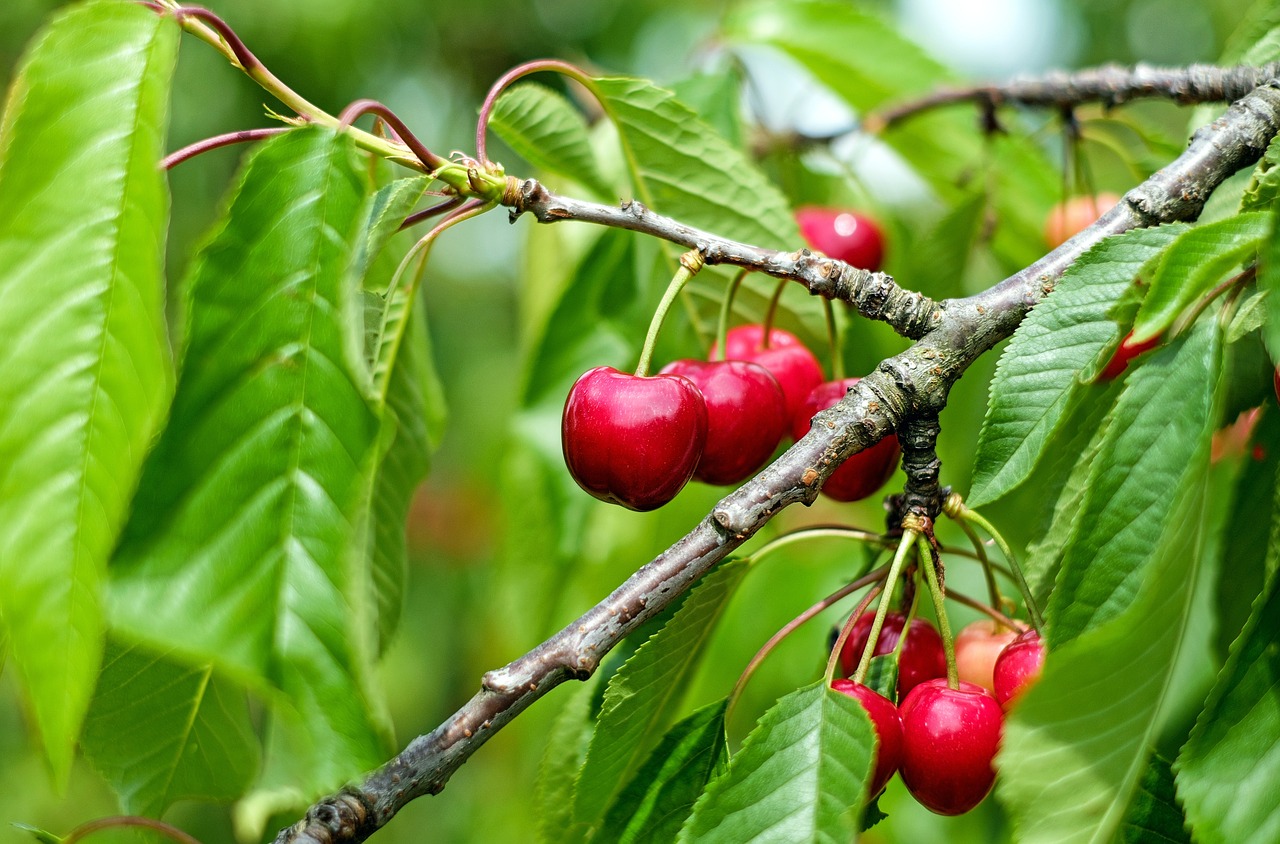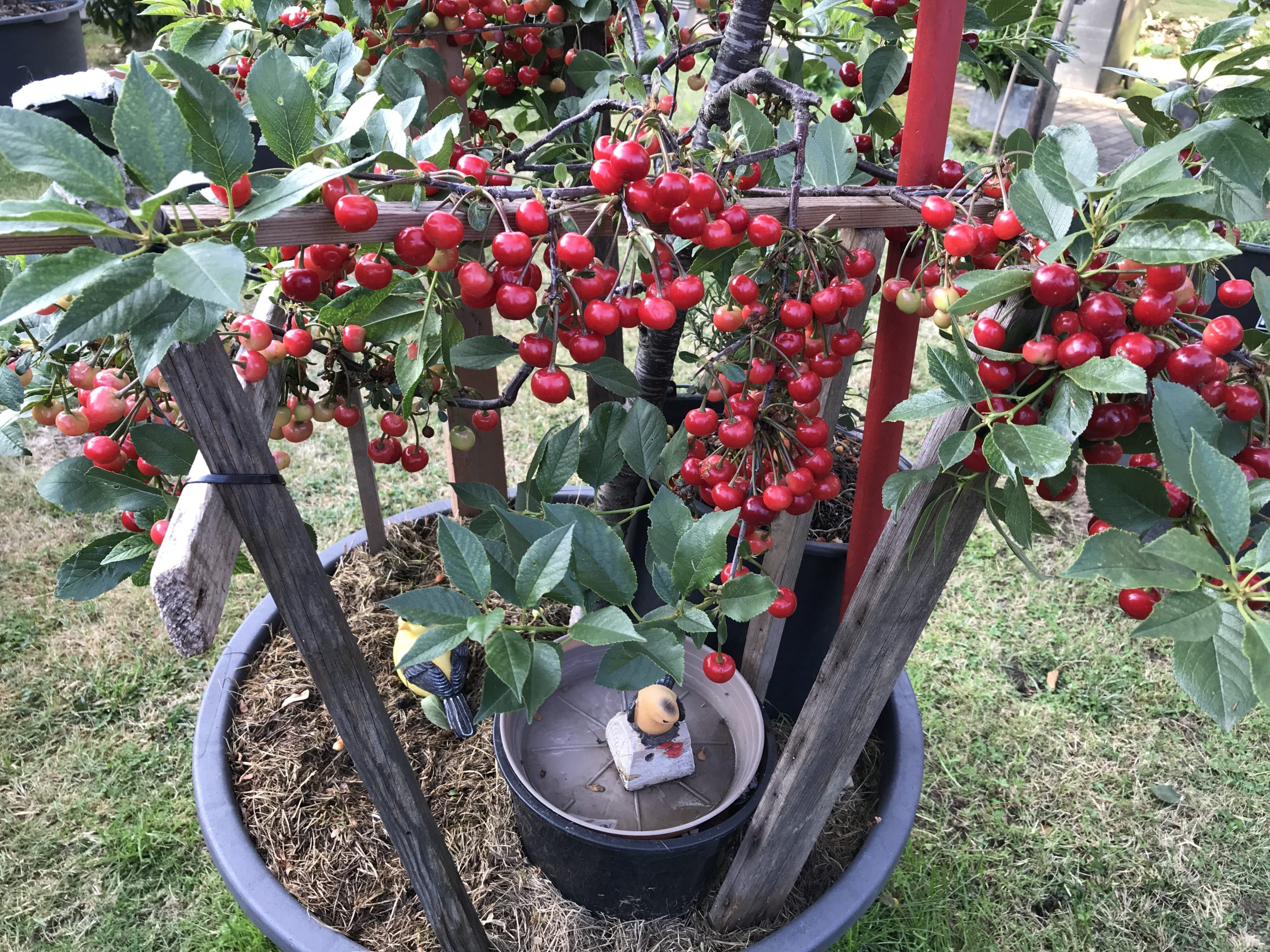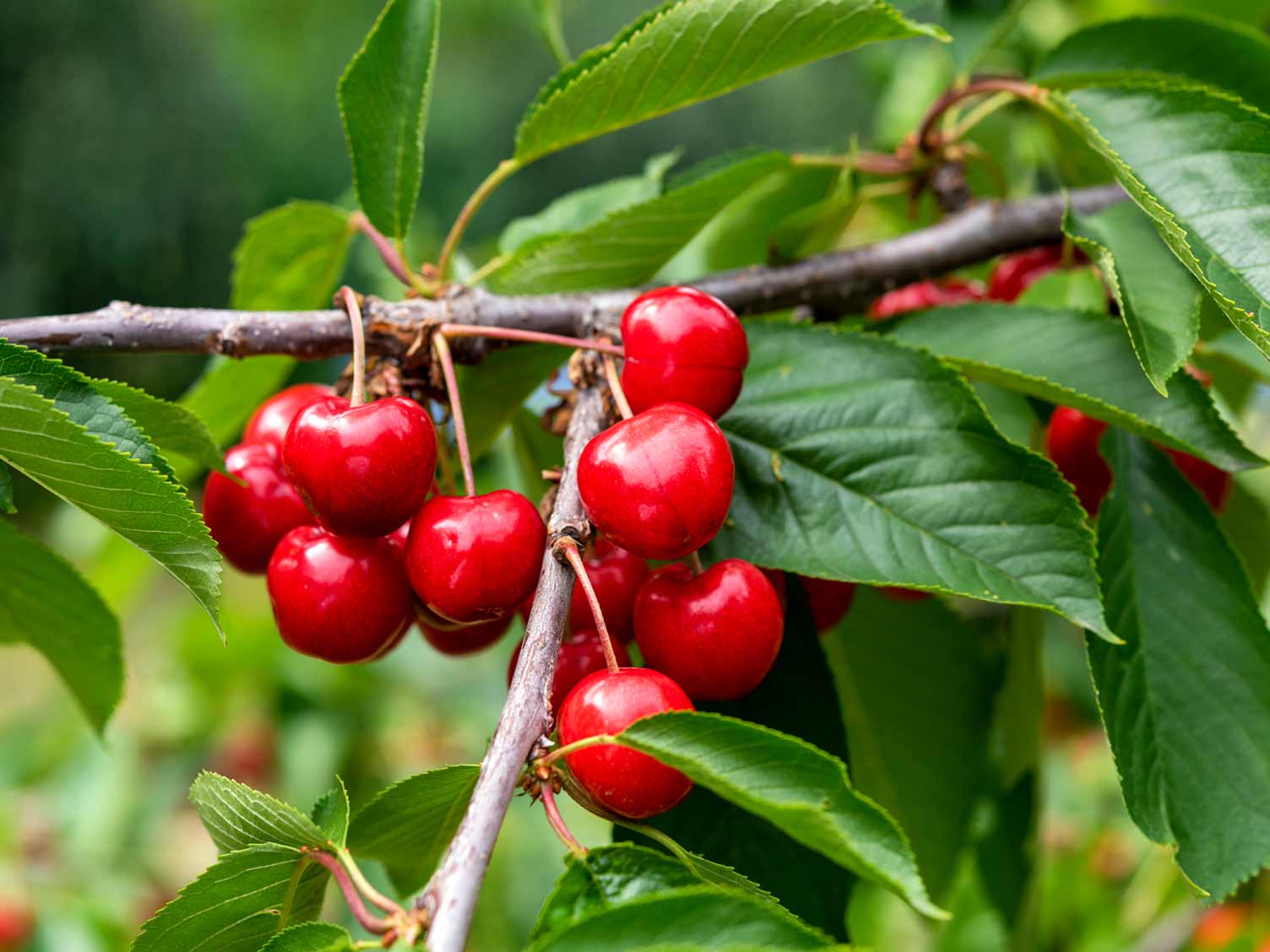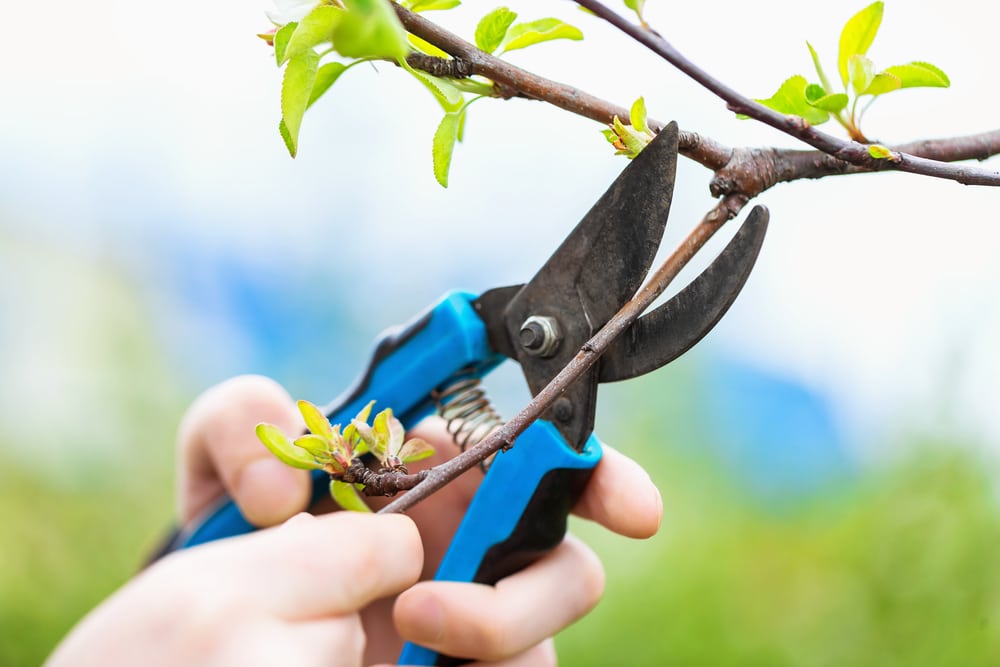Choosing the Right Cherry Tree Variety
When it comes to growing cherry trees, selecting the right variety is crucial for optimal growth and fruit production. There are several types of cherry trees to choose from, each with its unique characteristics and requirements. Sweet cherry trees, such as Bing and Rainier, are ideal for fresh eating and cooking, while sour cherry trees, like Montmorency, are better suited for baking and cooking. Dwarf cherry trees, like Compact Stella, are perfect for small gardens or containers. Each variety has its specific needs, including climate and soil type. For instance, sweet cherry trees thrive in warm climates with well-draining soil, while sour cherry trees prefer cooler temperatures and acidic soil. By understanding the specific needs of each variety, you can ensure a healthy and productive cherry tree. This is a critical step in learning how to grow cherry trees successfully, as it sets the foundation for a thriving tree. With the right variety, you’ll be well on your way to enjoying a bountiful harvest of delicious cherries.
Preparing the Soil for Cherry Tree Planting
Before planting a cherry tree, it’s essential to prepare the soil to ensure optimal growth and fruit production. The first step is to test the pH level of the soil, as cherry trees prefer a slightly acidic to neutral soil pH, ranging from 6.0 to 7.0. If the soil pH is too high or too low, it can affect the tree’s ability to absorb essential nutrients. Next, add organic matter such as compost or well-rotted manure to improve soil structure and fertility. This will help retain moisture, suppress weeds, and provide nutrients to the tree as it grows. Remove any weeds and debris from the planting area, as they can compete with the tree for water and nutrients. Finally, till the soil to a depth of 12-18 inches to loosen and aerate it, making it easier for the tree’s roots to establish themselves. By following these steps, you’ll be well on your way to creating a fertile and welcoming environment for your cherry tree to thrive, which is a crucial part of learning how to grow cherry trees successfully.
How to Plant a Cherry Tree: A Step-by-Step Guide
Planting a cherry tree is a crucial step in learning how to grow cherry trees successfully. With proper planting, you’ll set your tree up for a healthy and productive life. Here’s a step-by-step guide to help you get started. First, dig a hole that is twice as wide and just as deep as the tree’s root ball. If your soil is poorly draining, consider raising the planting bed by 2-3 inches to improve drainage. Next, gently remove the tree from its container or burlap, taking care not to disturb the roots. Place the tree in the hole, making sure the graft union (if applicable) is at least 2 inches above the soil surface. Fill the hole with soil, tamping it down gently as you go to remove any air pockets. Water the tree thoroughly to settle the soil and provide enough moisture to support establishment. Finally, mulch around the tree to retain moisture, suppress weeds, and regulate soil temperature. By following these steps, you’ll be well on your way to growing a thriving cherry tree that will provide you with delicious fruit for years to come.
Watering and Fertilizing Cherry Trees
Proper watering and fertilizing are essential components of learning how to grow cherry trees successfully. Cherry trees require consistent moisture, especially during the first year after planting. Water your tree regularly, providing about 1 inch of water per week, either from rainfall or irrigation. Avoid overwatering, which can lead to root rot and other problems. As for fertilization, cherry trees benefit from regular feeding to promote healthy growth and fruit production. Feed your tree with a balanced fertilizer (10-10-10 NPK) in early spring, following the manufacturer’s instructions. You can also add organic matter like compost or well-rotted manure to the soil to provide slow-release nutrients. Additionally, consider applying a fruit tree-specific fertilizer, which may contain additional nutrients like boron and zinc that are beneficial for cherry trees. By providing your tree with the right amount of water and nutrients, you’ll be rewarded with a bountiful harvest of delicious cherries.
Pruning and Training Cherry Trees for Optimal Growth
Pruning and training are crucial steps in learning how to grow cherry trees successfully. Pruning helps control the tree’s size, promotes healthy growth, and increases fruit production. To prune your cherry tree, remove any dead, diseased, or damaged branches, as well as any crossing or rubbing branches. Prune your tree annually, during its dormant season, to minimize the risk of disease and promote healthy growth. When pruning, make clean cuts just above a bud or a lateral branch, and remove any suckers or water sprouts that appear. Training your cherry tree is also essential for optimal growth and fruit production. Train your tree to a central leader or open center system, which allows for better air circulation and sunlight penetration. This will help prevent disease and promote healthy growth. Additionally, consider training your tree to a trellis or espalier, which can help increase fruit production and make harvesting easier. By pruning and training your cherry tree properly, you’ll be rewarded with a healthy, productive tree that will provide you with delicious cherries for years to come.
Pest and Disease Management for Cherry Trees
When learning how to grow cherry trees, it’s essential to be aware of the common pests and diseases that can affect them. Cherry trees are susceptible to pests like aphids, spider mites, and cherry fruit fly, which can cause damage to the leaves, stems, and fruit. Regularly inspect your tree for signs of infestation, such as holes in the leaves, sticky residue, or actual pests on the tree. To manage pests, use organic or integrated pest management (IPM) methods, such as introducing beneficial insects, spraying soapy water, or applying insecticidal soap. Cherry trees are also prone to diseases like powdery mildew, black knot, and cherry leaf spot, which can cause defoliation, reduced fruit production, and tree death. To prevent disease, maintain good tree hygiene, remove infected branches, and apply fungicides as needed. Additionally, practice good sanitation, such as disposing of fallen fruit and debris, to prevent the spread of disease. By being proactive in managing pests and diseases, you can help ensure the health and productivity of your cherry tree.
Supporting Cherry Trees: Staking and Mulching
When learning how to grow cherry trees, it’s essential to provide the necessary support to ensure the tree’s stability and promote healthy growth. Staking is a crucial step in supporting cherry trees, especially during the first year after planting. Use a sturdy stake and tie the tree to it using a soft material, such as twine or cloth, to prevent damage to the bark. Remove the stake after one year to allow the tree to develop its root system. Mulching is another vital aspect of supporting cherry trees. Mulch helps retain moisture, suppress weeds, and regulate soil temperature. Apply a 2-3 inch layer of organic mulch, such as wood chips or straw, around the base of the tree, keeping it a few inches away from the trunk. Replenish the mulch as needed to maintain its effectiveness. Additionally, consider using tree guards to protect the tree from damage caused by animals, machinery, or extreme weather conditions. By providing the necessary support, you can help your cherry tree thrive and produce delicious fruit for years to come.
Harvesting and Enjoying Your Cherry Tree’s Fruits
After months of nurturing and caring for your cherry tree, the moment of truth finally arrives – harvest time When learning how to grow cherry trees, it’s essential to know when to pick the cherries to ensure optimal flavor and texture. Typically, sweet cherries are ready to harvest in mid to late summer, while sour cherries are ready in late summer to early fall. Check the cherries regularly, as they can ripen quickly. Gently twist and pull the cherry to avoid damaging the stem or the tree. Handle the cherries carefully to prevent bruising and spoilage. Enjoy your fresh cherries as is, or use them in a variety of recipes, such as pies, jams, and salads. You can also preserve cherries through freezing, canning, or dehydrating to enjoy them throughout the year. By following these tips, you can savor the fruits of your labor and enjoy the rewards of growing your own cherry tree.







